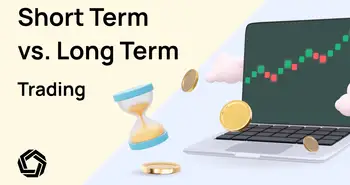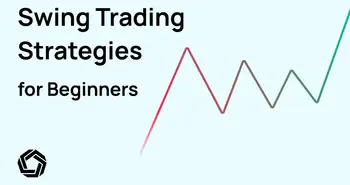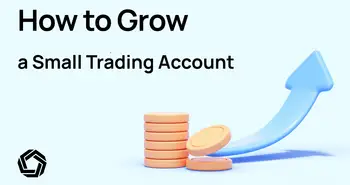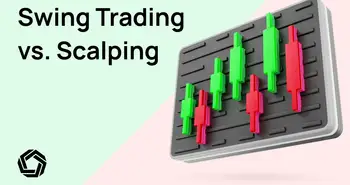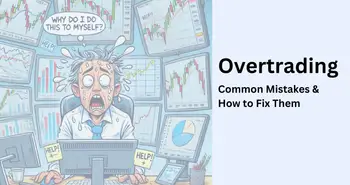How to Become a Successful Trader

Becoming a successful trader requires a combination of skills, knowledge, discipline, and perseverance. The trading style and goals that you choose will depend on your individual preferences, risk tolerance, and investment horizon.
The goals of traders vary depending on trading style and time horizon. Short-term traders tend to focus on making quick profits and aim for a high percentage of winning trades. Long-term traders are more concerned with the overall return on their investment and are willing to hold on to losing positions in the short term.
Here are some of the more common short-term and long-term trader types.
- Scalpers are short-term traders who aim to make quick profits by buying and selling securities within a few seconds or minutes. They look for small price movements and use high leverage to maximize their gains.
- In contrast to scalpers, swing traders hold their positions for a few days to a few weeks, looking to profit from medium-term price movements. They use a combination of technical and fundamental analysis to identify potential trades.
- Position traders hold their positions for weeks, months, or even years, looking to profit from long-term trends. They focus on fundamental analysis and macroeconomic trends to make their trading decisions.
Skills Required to Become a Successful Trader
Analytical Skills
Analytical skills are crucial for becoming a successful trader. Successful traders need to analyze market data, including price charts, financial news, and economic indicators.
Successful traders also need to understand the importance of managing risk, and analytical skills are essential for assessing and mitigating risk. By analyzing market data and historical trends over multiple timeframes, traders can identify potential risks and take steps to protect their capital.
A successful trading strategy is based on a thorough analysis of market conditions and a clear understanding of risk-reward ratios. Analytical skills are required to develop and refine a trading strategy that takes into account market volatility, liquidity, and other factors impacting trading outcomes.
Risk Management Skills
Risk management is essential for protecting trading capital. By managing risk, traders can avoid significant losses that could wipe out their accounts and prevent them from trading in the future.
Emotions such as fear and greed can have a significant impact on trading decisions. By managing risk, traders can control their emotions and avoid making impulsive decisions that may lead to losses.
Risk management is also key to maintaining consistency in trading. By managing risk, traders ensure that they are taking the same approach to each trade and avoiding erratic behavior that may lead to losses.
There are several risk management strategies that traders can use to manage their risk, including position sizing, stop loss orders, and diversification. By using these strategies, traders can manage their risk while still taking advantage of market opportunities.
Emotional Control
Emotional control in trading refers to the ability to manage one's emotions when making trading decisions.
Emotional control helps traders reduce cognitive biases that may affect their decision-making. By controlling emotions, traders make more rational and objective decisions based on market analysis.
Traders must stay disciplined in the face of market volatility. By controlling emotions, traders can stick to their trading plan and avoid making uninformed decisions.
Trading can be a stressful activity, especially for intraday traders. Emotional control can help traders reduce stress and maintain a healthy work-life balance, avoiding potential burnout. A great way to help with this is to practice trading affirmations every day.
Trading affirmations are positive statements that traders can use to build confidence, reinforce positive behaviors, and control their emotions during trading activities. These affirmations can help traders maintain a positive mindset, which can be critical in making successful trading decisions.
Discipline
Discipline refers to the ability to follow a predetermined trading plan and stick to a set of rules and guidelines for entering and exiting trades. It involves having the self-control to avoid impulsive decisions and emotional reactions and instead make rational and objective decisions.
Traders who lack discipline may make impulsive decisions based on short-term market fluctuations, which can increase their risk exposure. Traders who stay focused on their long-term goals, can avoid distractions and maintain their focus on achieving their trading objectives.
Patience
Traders must possess the ability to wait for the right opportunities and to exercise restraint when necessary. This includes having the patience to wait for the right market conditions before entering a trade and holding positions for an extended period if necessary.
Patience helps traders avoid making impulsive decisions based on emotions or short-term market fluctuations. Traders who lack patience may be more likely to enter trades prematurely or exit trades too soon.
Patience is also key to maximizing profits. By waiting for the right opportunities, traders can identify trades that offer a favorable risk-reward ratio and take advantage of them.
How Much Do Traders Earn
The potential earnings of a trader can vary widely depending on a number of factors, including the trader's experience, skill level, trading style, and the amount of available capital.
Traders can earn money through capital gains and through income.
Capital gains refer to the profits that traders earn by buying an asset at a low price and selling it at a higher price. For example, a trader might buy a stock at $50 per share and sell it at $75 per share, earning a capital gain of $25 per share.
Income refers to the profits that traders earn through trading strategies, such as day trading or swing trading. For example, a day trader might enter and exit multiple trades in a single day, earning a small profit on each trade.
Earnings potential for traders can vary depending on their level of experience and skill. Some successful traders are able to earn millions of dollars each year, while others may earn more modest profits.
There are several factors that can affect a trader's earnings.
For example, different trading styles can lead to different levels of earnings. A day trader who makes frequent trades may have the potential to earn more than a swing trader who holds positions for several days or weeks.
The amount of capital a trader has available to invest can have a significant impact on the trader’s earnings potential. Traders with more capital may be able to take on larger positions and potentially earn more, while traders with less capital may need to be more conservative with their trades.
Trading costs such as commissions, fees, and spreads can impact a trader's earnings as well. Traders who are able to minimize trading costs may be able to earn more over the long term.
How to Avoid Losing Money as a Trader
Traders can lose money in various ways, and it is important for traders to be aware of scams and fraudulent schemes that can lead to significant financial losses.
For example, trading signals are often marketed as a way to help traders make better trading decisions. However, many trading signal services may use misleading marketing tactics or provide incomplete information to persuade traders to buy their services.
Many scams and fraudulent schemes promise traders quick and easy profits with little effort or risk. These schemes often involve investing in high-risk assets or trading strategies without proper due diligence.
Ponzi schemes are a type of investment scam where returns are paid to earlier investors using the capital of new investors. Forex scams often involve fake brokers, fake trading platforms, or false promises of high returns.
Cryptocurrency scams, increasingly common in recent years, involve fraudulent ICOs (initial coin offerings) or false promises of high returns.
Use Leverage Carefully
Leverage is a powerful tool that can amplify a trader’s gains and losses. However, if used improperly, leverage can result in significant losses.
Consider the following.
If a trader is using 10x leverage and the market moves against them by 10%, they would end up losing 100% of their initial investment. Even small market movements can result in significant losses if a trader is using too much leverage.
Leveraged traders must maintain a certain amount of margin in their accounts to cover potential losses. If the market moves against the trader and their account falls below the required margin level, this can result in margin calls or forced liquidations.
Overtrading
Overtrading refers to placing too many trades or trading too frequently, often without a clear trading plan or strategy. Overtrading should be avoided for at least the following reasons.
- Every time a trader places a trade, they incur trading costs, such as commissions or spreads.
- Traders who overtrade may become distracted and lose focus on their overall trading strategy. This can lead to impulsive trading decisions.
- Overtrading can lead to emotional trading, where traders make decisions based on their emotions rather than their trading plan.
Understand the Trading Landscape
Traders need to understand the trading landscape to make informed decisions and develop effective trading strategies.
By understanding the characteristics of different markets, traders can focus on trends and patterns. For example, traders can analyze past performance data, track news and events, and follow market indicators to gauge market sentiment.
Traders also need to understand the trading landscape so as to navigate the complexities of trading in different markets. Different markets have different rules and regulations, which can impact trading strategies and affect the level of risk involved.
Participants in Trading
The behavior of different market participants can affect the price and liquidity of certain assets. Understanding the motivations, strategies, and trading patterns of different types of participants helps traders make more informed trading decisions.
For example, institutional investors (e.g., hedge funds, mutual funds, and pension funds) often have significant market-moving power due to their large volumes of assets. Understanding their investment goals, trading strategies, and risk management practices can help traders anticipate market movements.
Retail investors are individuals who trade stocks, bonds, and other financial instruments. Their behavior can be emotional and less predictable, making it more challenging to anticipate their actions.
Market makers and liquidity providers play an essential role in providing liquidity to markets and facilitating price discovery. Understanding their pricing models and the risks they face can help traders gauge market conditions.
Develop a Winning Trading Strategy
Goal Setting
Traders develop a winning strategy based on goal setting by establishing clear objectives and developing a plan to achieve those objectives.
Initially, traders should set measurable goals aligned with their trading objectives, like setting a goal of achieving a certain percentage return over a specific period.
Traders also need to define a trading plan to achieve those goals. This plan should outline the strategies, techniques, and tools that will be used to achieve their goals, like using technical analysis to identify trading opportunities.
Risk Management
Before developing a trading strategy, traders should establish the level of risk that they are comfortable taking on each trade. Traders with a higher risk tolerance may be more comfortable with aggressive strategies. Those with a lower risk tolerance may prefer more conservative approaches.
Then, traders should develop a risk management approach that aligns with their goals and objectives. To ensure they are consistently applying a risk management approach, it is important to set specific guidelines for each trade. For example, traders may decide to set a maximum loss threshold for each trade.
Technical Analysis
Technical analysis involves using price charts and technical indicators to identify market patterns and trends. Summarized below are a few steps traders can take to develop a winning strategy based on technical analysis.
- The first step is to identify key support and resistance levels on price charts. These levels represent areas where the market is likely to encounter buying or selling pressure.
- Moving averages, oscillators, and trend lines can be used to confirm the direction of the trend and identify potential entry and exit points.
- Candlestick patterns can help identify potential trend reversals and trading opportunities. Candlestick patterns use different shapes and colors to represent the price action of an asset over a specific time frame.
Fundamental Analysis
Fundamental analysis involves analyzing the underlying economic and financial factors that drive the price of an asset.
The first step in developing a fundamental trading strategy is to identify the key economic indicators that are most relevant to the asset being traded. These may include inflation rates, GDP growth, unemployment rates, and interest rates.
Traders can analyze the financial statements of companies to identify trends in revenue, earnings, and cash flow. By examining the financial health of a company, traders can make informed decisions about the direction of the stock price.
Market sentiment is the general investor attitude toward the traded asset. By analyzing market sentiment, traders can identify potential trends and opportunities for profit.
Choose a Reliable Trading Platform
- Fees and Commissions: Look for platforms with competitive and reasonable fees and commissions, including deposit and withdrawal fees.
- Security Measures: A trustworthy trading platform should have robust security measures in place, such as two-factor authentication, SSL encryption, and segregated accounts. It's also worth considering platforms that offer non-custodial wallet types, which means that the platform doesn't hold your funds, reducing the risk of theft or loss.
- Range of Assets: The platform should offer a variety of assets, including stocks, commodities, forex, and cryptocurrencies, to help you diversify your portfolio and maximize your trading opportunities.
- Order Execution: Choose a platform that provides fast and reliable order execution, especially if you're a day trader who needs quick access to the markets.
- User Interface and Experience: A trading platform with an intuitive user interface can help you execute trades more efficiently, so make sure to test out the platform's user experience before committing to it.
- Trading Tools: A reliable trading platform should offer trading tools such as real-time charts and technical indicators to help you make informed trading decisions.
Conclusion
Becoming a successful trader requires discipline, patience, and hard work. Disciplined traders stick to their trading plan and avoid emotional decision-making. Patience is essential in trading as it takes time to develop a winning strategy. Traders who are willing to put in the hard work have a greater chance of long-term success.

Disclaimer: All investments involve risk, and the past performance of a security, industry, sector, market, financial product, trading strategy, or individual’s trading does not guarantee future results or returns. Investors are fully responsible for any investment decisions they make. Such decisions should be based solely on an evaluation of their financial circumstances, investment objectives, risk tolerance, and liquidity needs. This post does not constitute investment advice.

Painless trading for everyone
Hundreds of markets all in one place - Apple, Bitcoin, Gold, Watches, NFTs, Sneakers and so much more.

Painless trading for everyone
Hundreds of markets all in one place - Apple, Bitcoin, Gold, Watches, NFTs, Sneakers and so much more.


